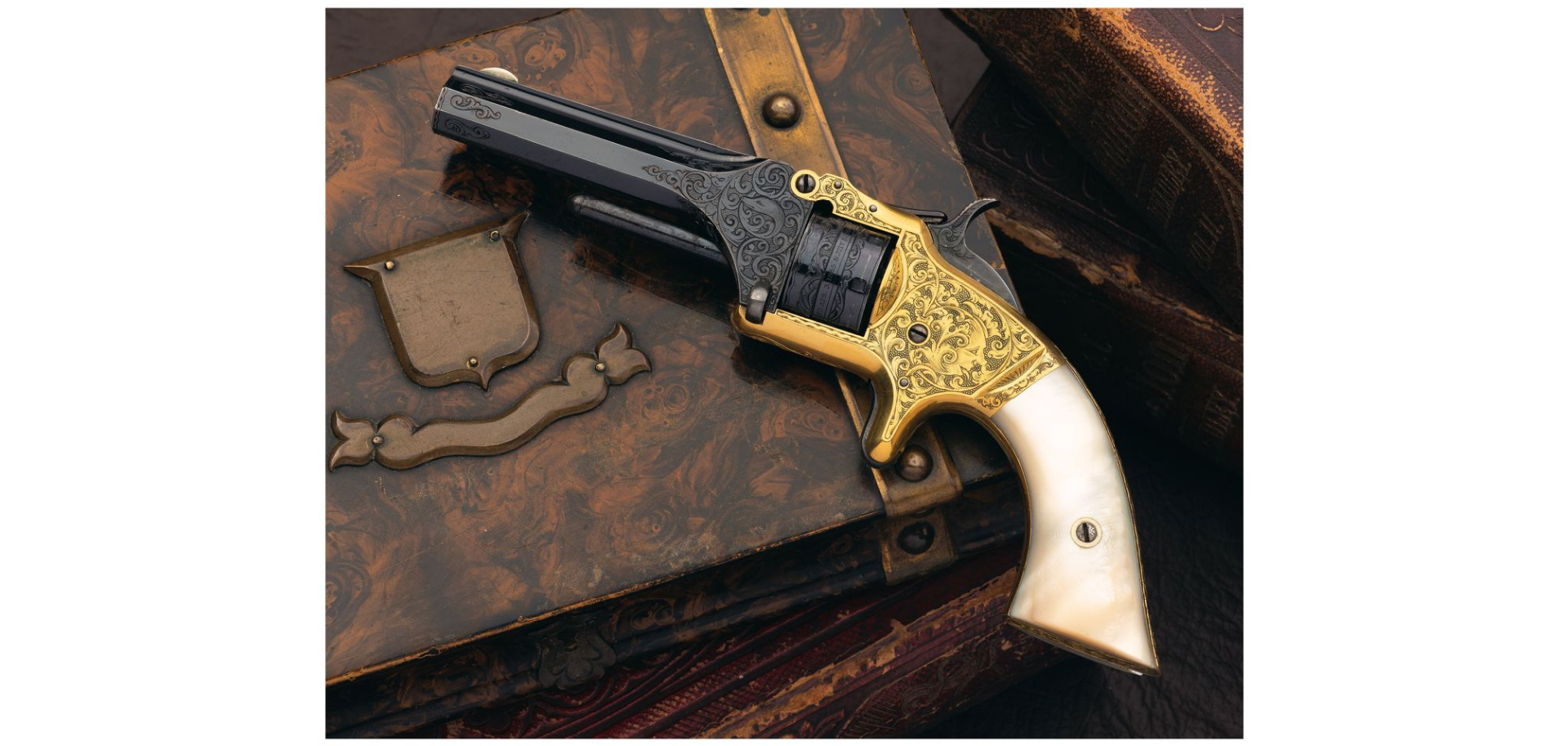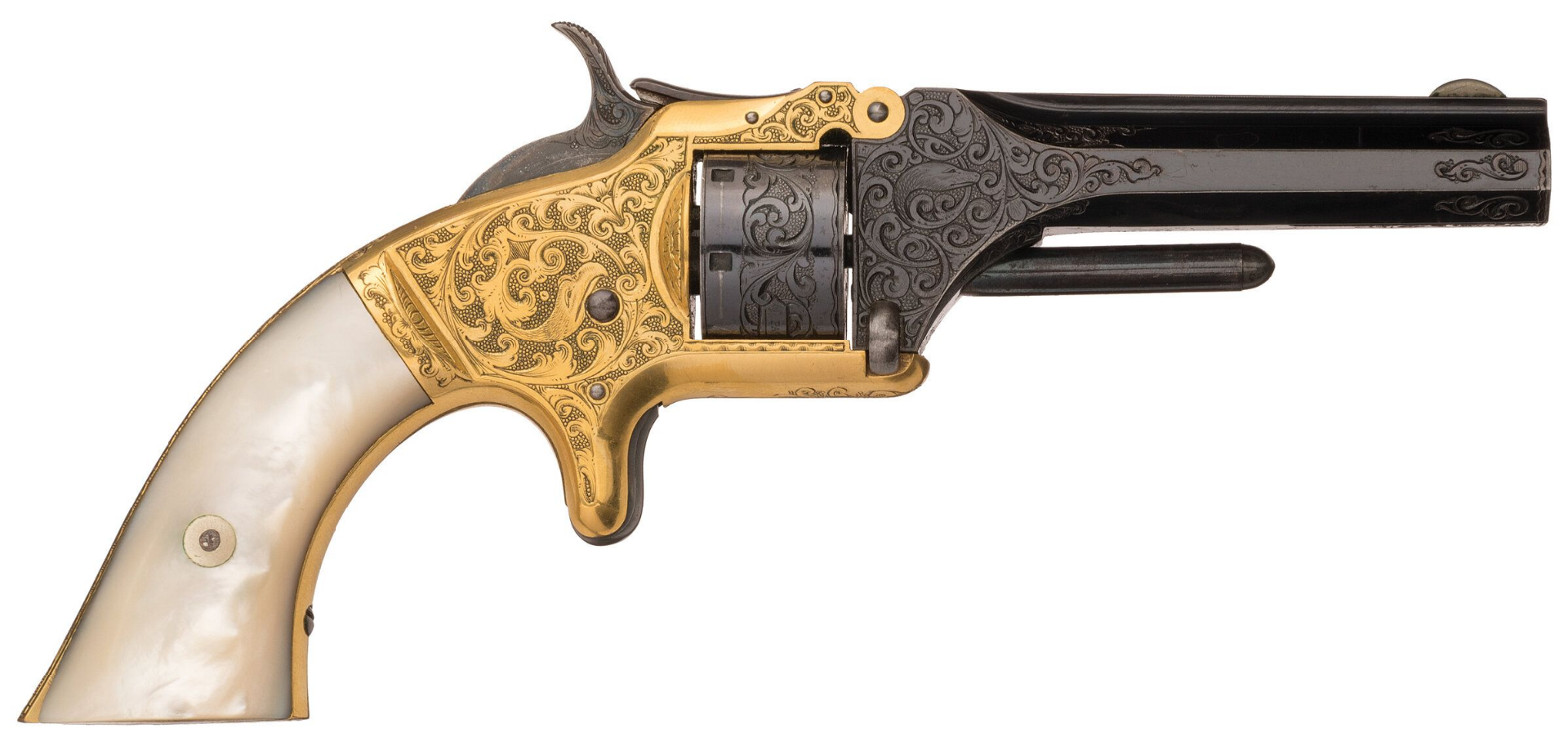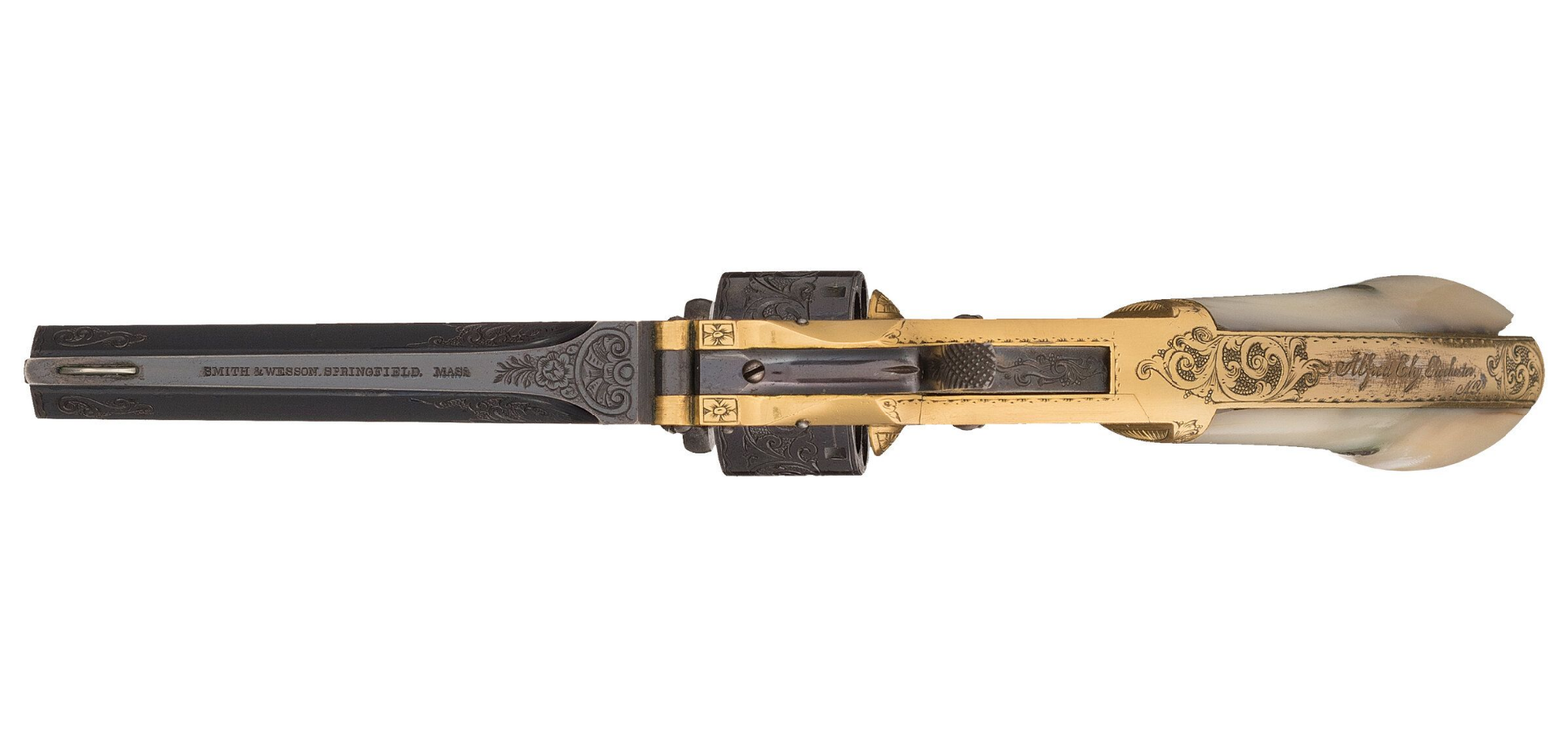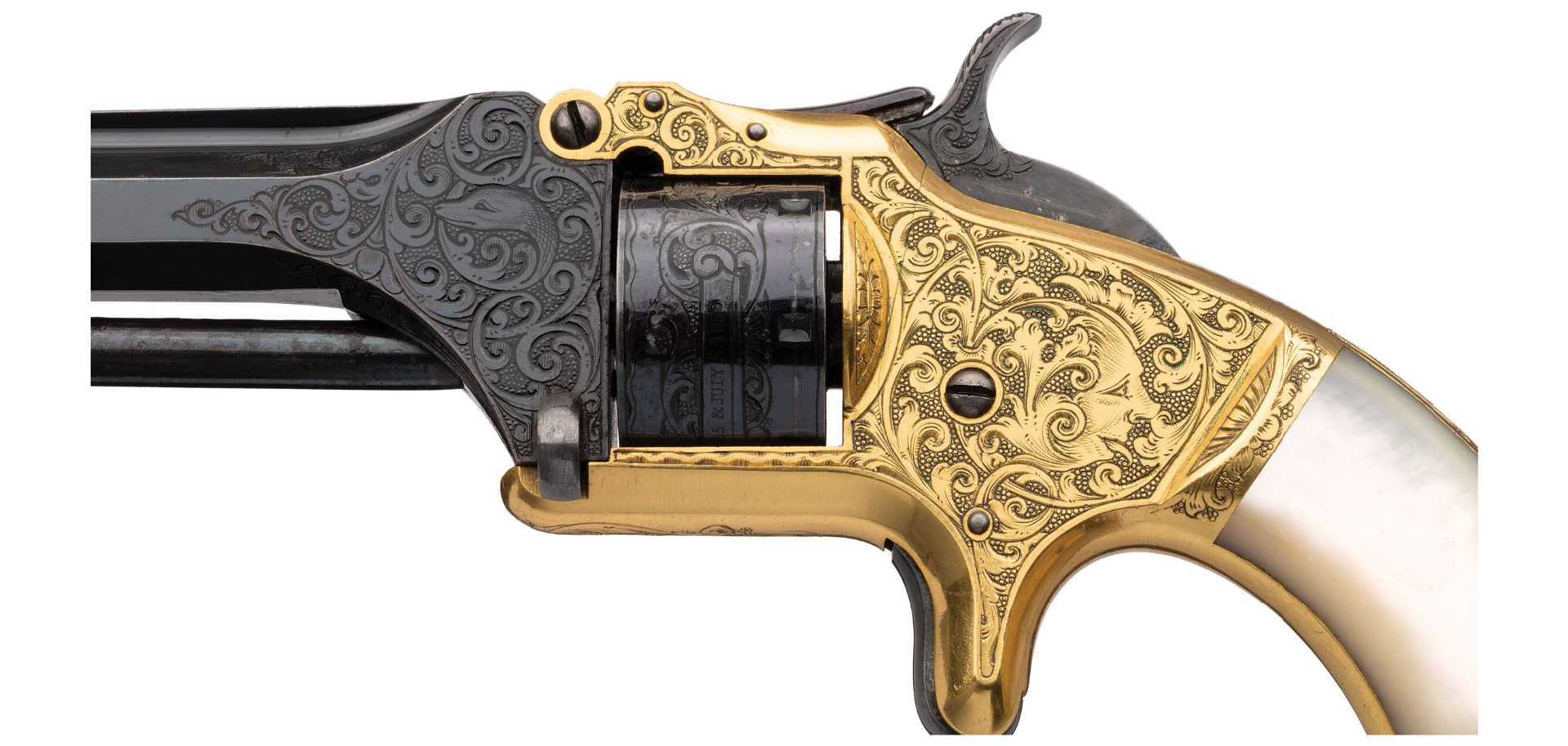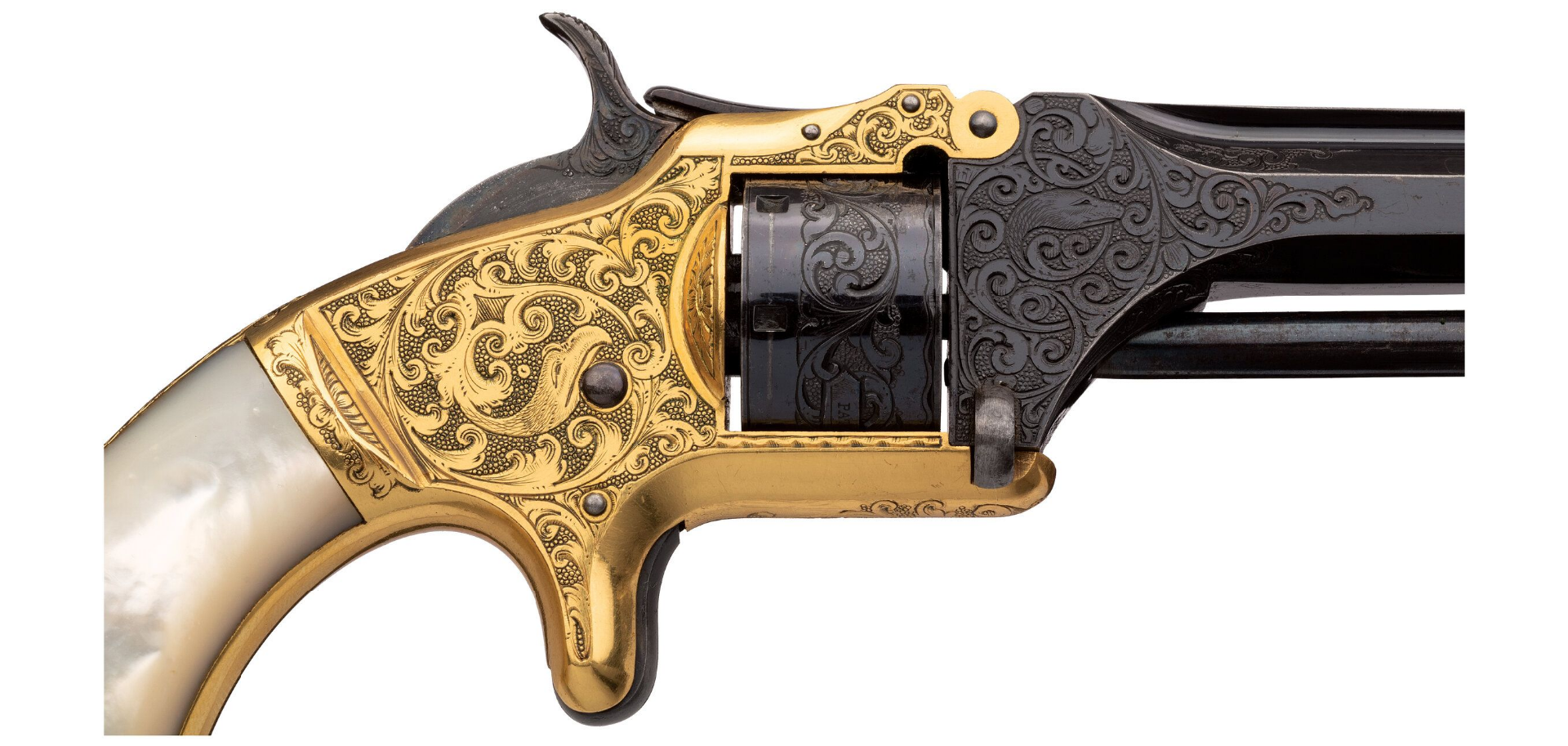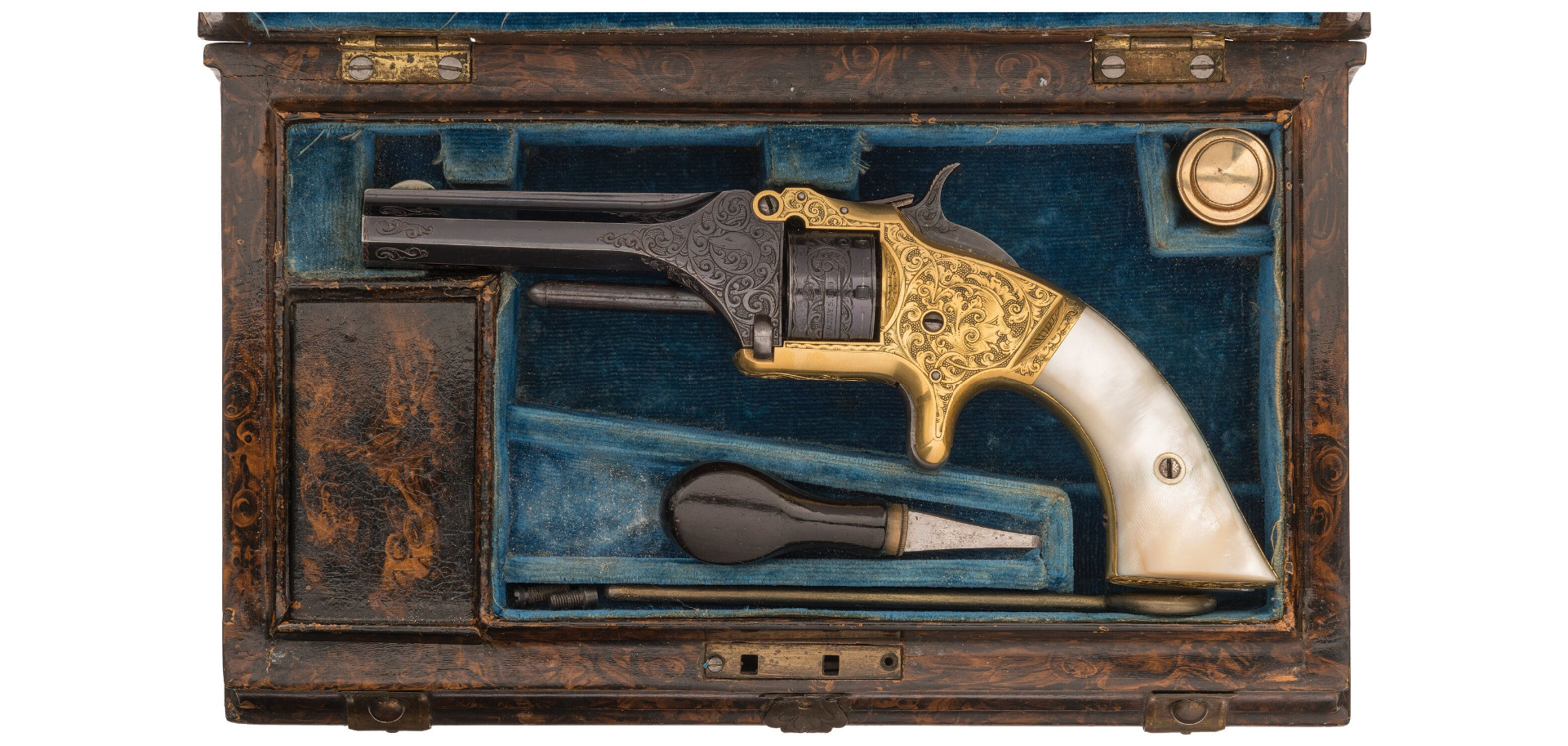
G. Young Engraved Smith & Wesson Model No. 1 Revolver
(A) STUNNING, NEVER PUBLICLY OFFERED, PAIR OF DANIEL MOORE PRESENTATION PISTOLS WITH SOLID SILVER MOUNTS BY JOHN KING, OWNED BY EDWARD LLOYD IV, "THE PATRIOT", DELEGATE TO THE CONTINENTAL CONGRESS
Manufactured from 1860 to 1868. Offered here is a wonderful, museum quality example of fantastic Gustave Young artistry on a famed S&W Model No. 1 Second Issue Revolver inscribed to a noted U.S. congressman captured at the First Battle of Bull Run. Factory engraved examples, such as this one, are always in demand by S&W collectors, and its link to a noted Union Civil War congressman only adds to the desirability and historical significance. Considering that factory engraved examples for this model were generally plated in nickel, this blued and gold plated example makes for an ultra rare piece of S&W artistry. The profuse engraving is by world renowned Master Engraver Gustave Young. Gustave Young worked with Smith & Wesson as early as 1865 after serving as Colt's Master Engraver and was the in-house engraver for Smith & Wesson starting in 1869 until his death in 1895. His sons, Oscar, Eugene, and Robert, also worked for Smith & Wesson and used similar styles. On this revolver, Young's fine exhibition quality scrollwork on a punch dot background covers 90% of the surface. Even the hammer is scroll engraved. Amongst the scrollwork on both sides of the barrel and frame are dog heads (barrel), a grotesque head (left side of frame), and an eagle head (right side of frame). The back strap is inscribed in script, "Alfred Ely, Rochester/NY." Alfred Ely (1815-1892) was a U.S. Representative from New York. Elected as a Republican, Ely served in the 36th and 37th Congresses for the New York's 29th Congressional district. During the Civil War he was taken prisoner by the Confederates while witnessing the First Battle of Bull Run (July 21, 1861) and served nearly six months in Libby Prison, Richmond, Virginia. His interest in military preparedness as well as his active participation in raising companies for the Union army drove him to the battlefield to observe the fighting himself. Eley was joined by a number of politicians and local citizens to watch the battle unfold. Early in the battle Union troops appeared to be winning, but a late rally by Confederate General Thomas "Stonewall" Jackson doomed a Union victory. Union soldiers and civilian onlookers like Ely were captured. Among his fellow prisoners was future Governor of Wisconsin William H. Upham who was then serving with the 2nd Wisconsin Volunteer Infantry Regiment. His time in prison took an ominous turn after Union forces captured the crew of the Savannah, a Confederate privateer. The crew was accused of being pirates and were put on trial in New York. If found guilty, the crew faced the death penalty. The Confederates threated to hang Union prisoners if any of the Savannah crew members were hanged and assigned Ely with the role of deciding which of his fellow prisoners would hang. The hangings on either side never took place. President Lincoln decided to treat the accused pirates as POWs to avoid reprisal hangings. Ely was released from prison in a prisoner exchange on Christmas Day 1861. After his second and final Congressional term, Ely returned to practicing law. He died in Rochester, New York on May 18, 1892. The cylinder has the standard patent marking, and the barrel has the standard one-line Springfield address. The revolver wears a set of pearl grips. The right grip panel is numbered to the gun. Matching assembly marks appear on the grip frame, cylinder, and barrel. The unusual and rare book style case has a fancy burled walnut veneer, brass hardware, and blue velvet lining and contains a case key, a screwdriver, a cleaning rod, an oiler, and a box of American Metallic Cartridge Co. 22 RF cartridges (16/50 rounds). Provenance: The Mac McCroskie Collection
